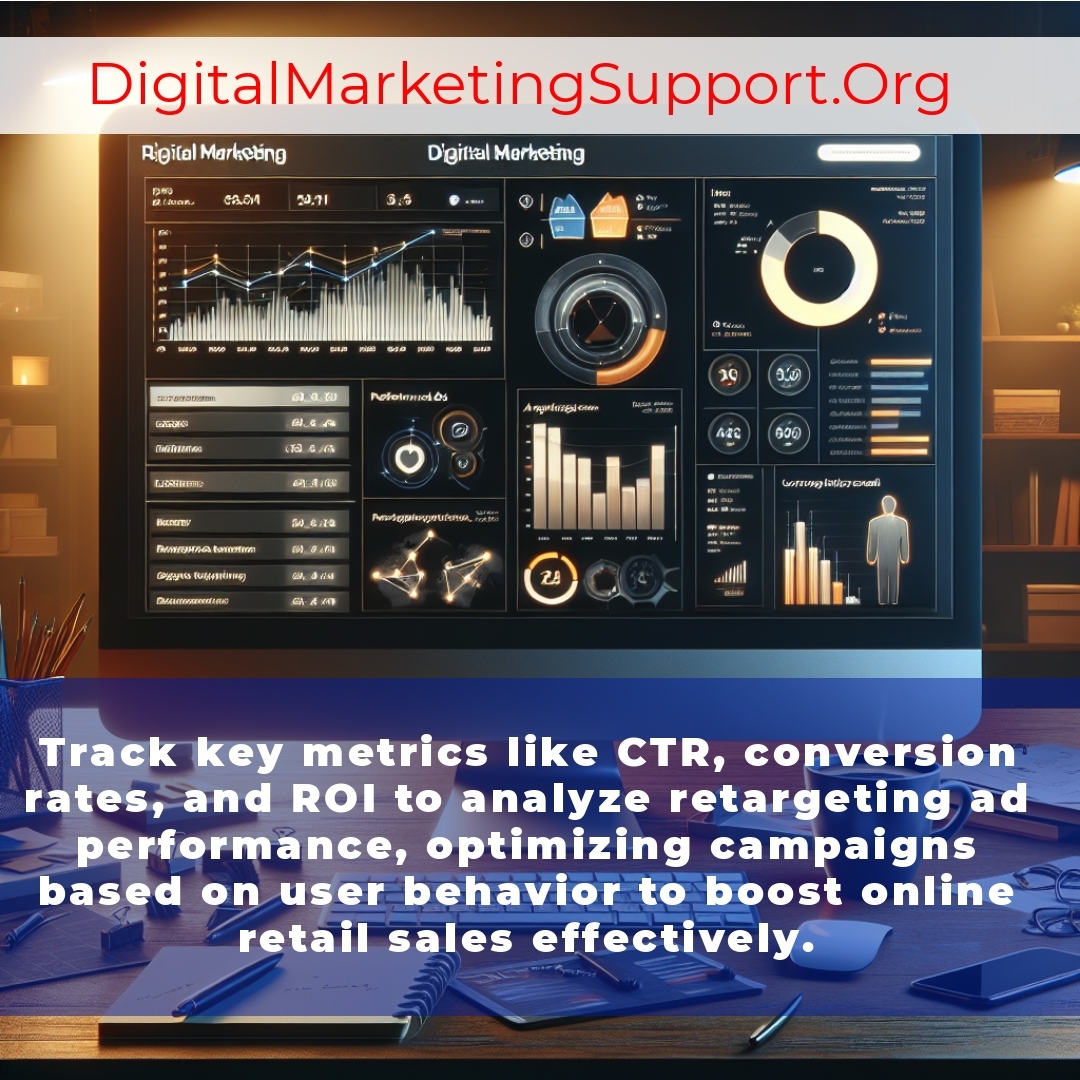Retargeting ads have emerged as a vital tool for online retailers, aiming to reconnect with potential customers who did not complete a purchase. Understanding and measuring Retargeting Ad Performance is crucial for enhancing sales outcomes. This article explores key strategies, performance metrics, and best practices to optimize ad effectiveness for e-commerce businesses.
“Analyze the data; your customers are waiting for your return.”

Retargeting ads are a powerful way for online retailers to reconnect with potential customers who haven’t completed their purchases. By displaying ads to users who visited their website but left without buying, retailers have a second chance to entice these customers back. Understanding the effectiveness of these ads is key to improving sales. That’s why measuring Retargeting Ad Performance is essential to enhancing the overall success of your online marketing strategies.
Understanding Retargeting Ads
So, what exactly are retargeting ads? In simple terms, they are online advertisements that follow users around the internet after they’ve shown interest in a product or service. The main purpose of these ads is to remind potential customers of what they viewed, encouraging them to complete their purchase. The beauty of retargeting ads lies in their ability to create familiarity and the ideal push for users ready to make a final decision.
Retargeting ads work using a tracking pixel, which is a small piece of code placed on your website. When users visit your site, the pixel collects their data, making it possible for you to show your ads to them elsewhere online. The focus here is on conversion rates and engagement levels. A higher conversion rate indicates that your ad is effective, while engagement metrics can tell you how well your audience is responding to the ads.
The Importance of Analyzing Retargeting Ad Performance
Now, why does analyzing ad campaign performance matter so much for online retailers? Well, without measuring performance, you’re essentially navigating without a map. Understanding how your ads perform can help identify what’s working and what isn’t, allowing you to fine-tune your strategy accordingly.
Some performance metrics relevant to retargeting include click-through rates (CTR), conversion rates, and cost per acquisition (CPA). Tracking these metrics can lead to valuable insights. Additionally, utilizing ad analytics equips online retailers with the necessary tools to improve their retargeting strategies, leading to better outcomes.
How to Track Retargeting Ad Performance for Online Retailers
Tracking retargeting ad performance often sounds daunting, but there are several tools and software available that make this easier. Google Analytics, Facebook Ads Manager, and various third-party platforms can provide you with valuable insights.
Here’s a simple step-by-step guide on how to track your ad performance:
- Start by analyzing conversion rates. Look at how many users who clicked on your ad ended up making a purchase.
- Next, measure ad engagement. This can include metrics like likes, shares, and comments when applicable.
- Finally, identify customer retargeting trends. Are there specific demographics that respond better to your ads? Understanding these trends can help refine your targeting.
Best Practices for Analyzing Retargeting Ads
For online retailers, optimizing retargeting ad performance is crucial. Here are some best practices to keep in mind:
- Regularly review your ad metrics and performance to see what’s working.
- Adjust your retargeting strategies based on what the analytics show. If a particular ad isn’t performing as expected, don’t hesitate to tweak or change it.
- Consider case studies of successful retargeting campaigns within e-commerce to glean insights and inspiration.
Improving Retargeting Ad Performance for E-commerce Businesses
When it comes to enhancing your ad effectiveness, consider using advanced strategies. Customize your ad content based on the customer behavior you observe. For example, if a customer abandoned their cart, showing them those specific products in your ads can be compelling.
Leverage the performance metrics mentioned earlier. These insights can inform your future ad campaigns, making them more effective over time. Utilizing split testing can help determine which ads resonate most with your audience as well.
Conclusion
In conclusion, tracking and analyzing Retargeting Ad Performance is essential for online retailers looking to maximize their marketing efforts. By understanding the ins and outs of retargeting ads, utilizing analytics effectively, and applying best practices, you can significantly improve your ad effectiveness. Don’t miss out on the potential sales that retargeting can bring. Start applying these strategies today for optimal results!
If you’re interested in diving deeper into tracking tools or best practices, there are plenty of resources available online. Joining community forums can also provide avenues to share experiences and strategies with fellow online retailers.
Frequently Asked Questions
What are retargeting ads?
Retargeting ads are online advertisements that follow users after they’ve shown interest in a product or service on a retailer’s website. Their goal is to remind potential customers about what they viewed and encourage them to complete their purchase.
How do retargeting ads work?
Retargeting ads work using a tracking pixel, a small piece of code that collects data when users visit your site. This allows you to show your ads to these users on other websites, helping to increase conversion rates and engagement levels.
Why is analyzing retargeting ad performance important?
Analyzing ad performance is crucial because it helps identify what strategies are successful and which aren’t. This knowledge allows you to refine your campaigns and improve overall sales effectiveness.
What metrics should I track for retargeting ads?
- Click-through rates (CTR)
- Conversion rates
- Cost per acquisition (CPA)
Which tools can I use to track retargeting ad performance?
Several tools make tracking easier, including Google Analytics, Facebook Ads Manager, and various third-party platforms that provide valuable insights about your ads.
What are some best practices for analyzing retargeting ads?
- Regularly review your ad metrics to see what’s effective.
- Adjust your retargeting strategies based on performance analytics.
- Study successful case studies of retargeting campaigns in e-commerce.
How can I improve my retargeting ad performance?
Consider customizing your ad content based on customer behavior, such as showing specific products to users who abandoned their carts. Use performance metrics to inform future campaigns, and utilize split testing to find out which ads resonate best with your audience.








